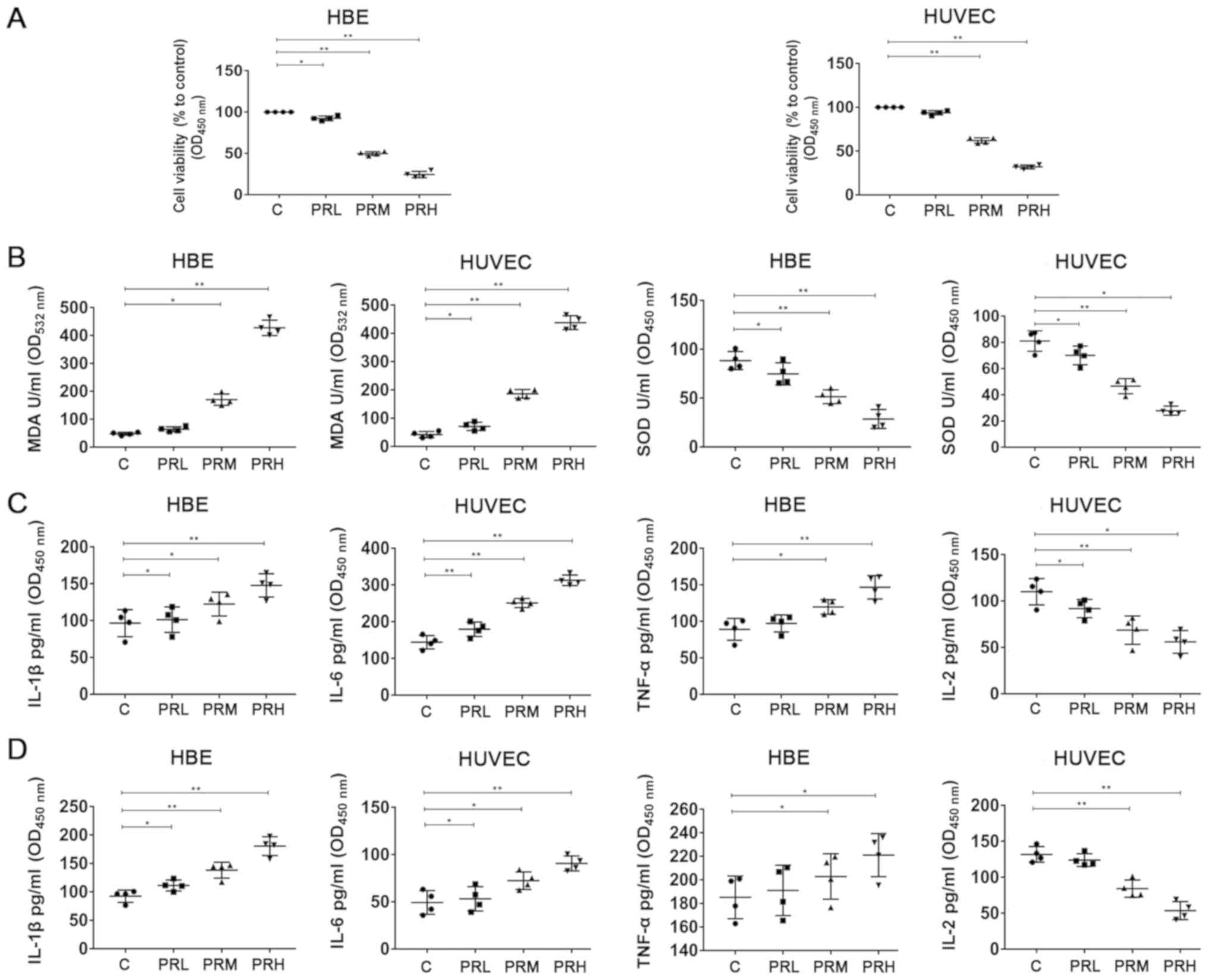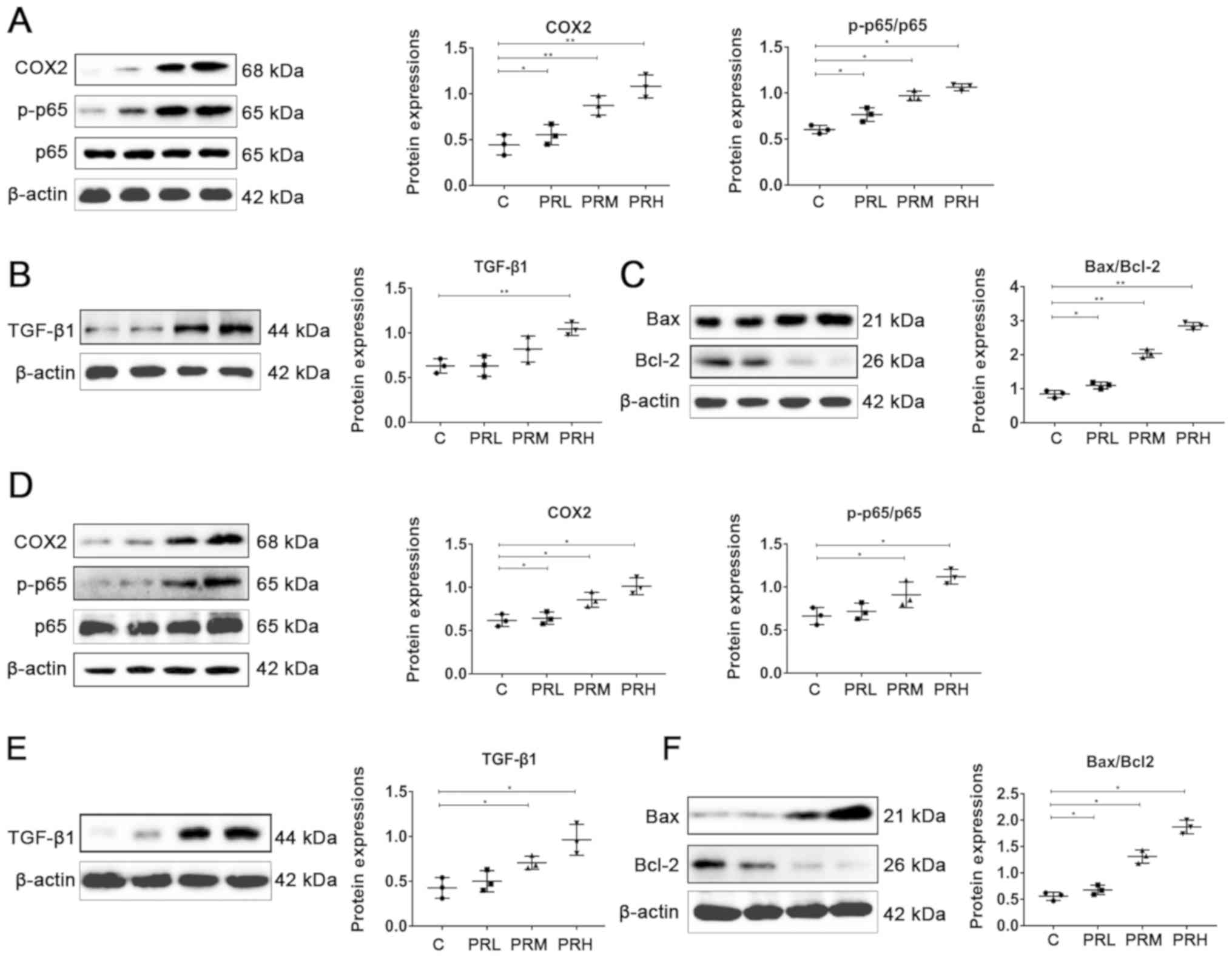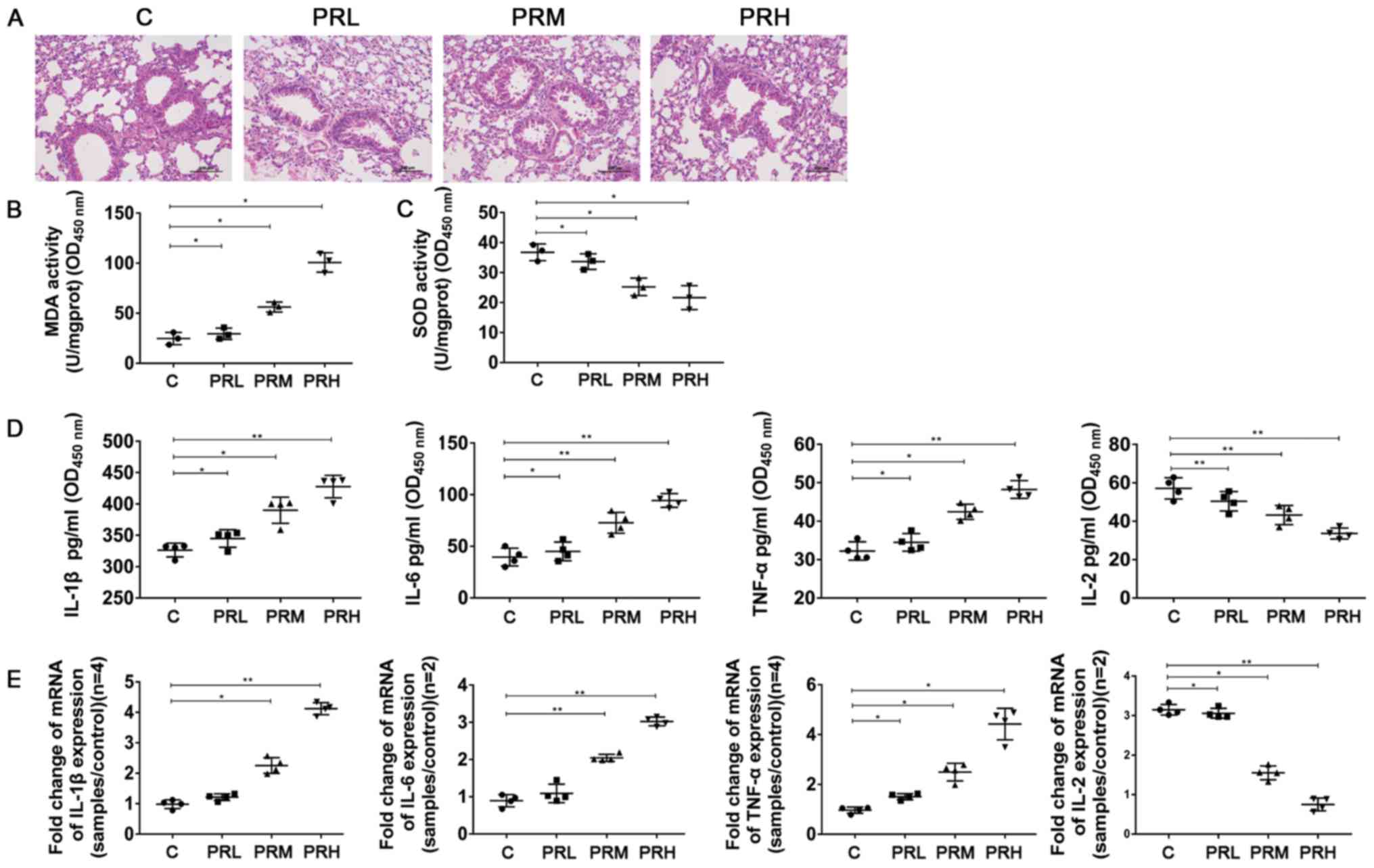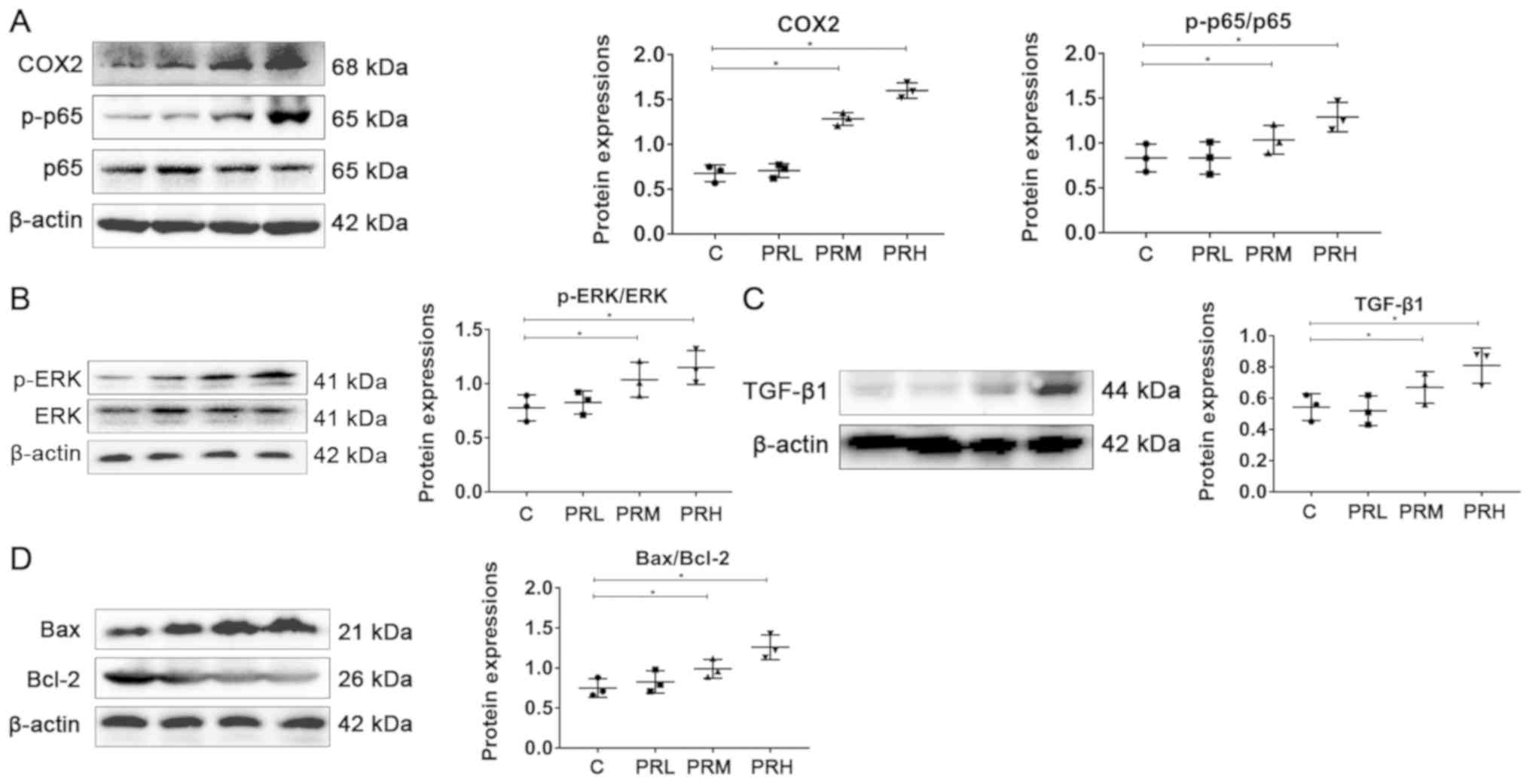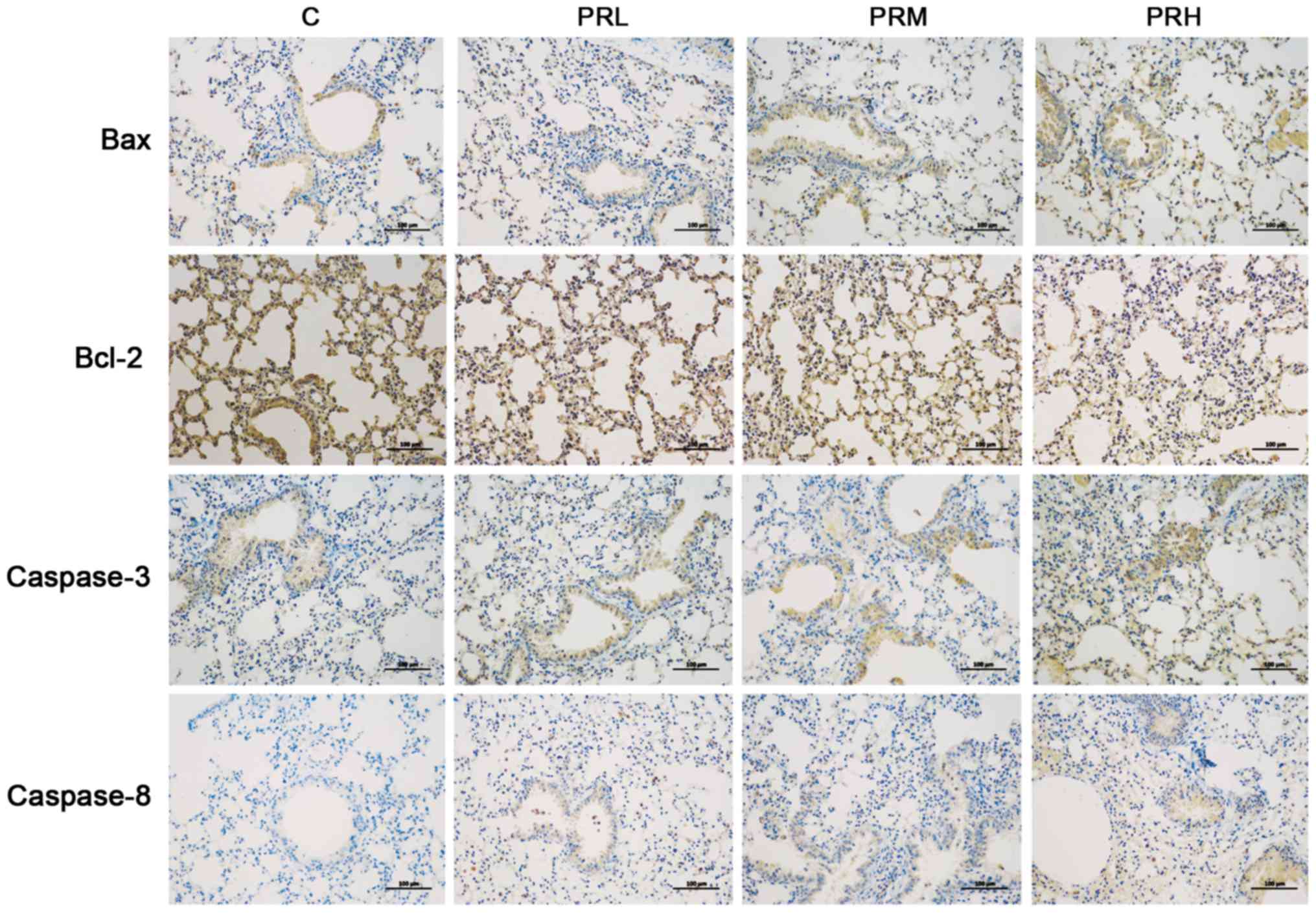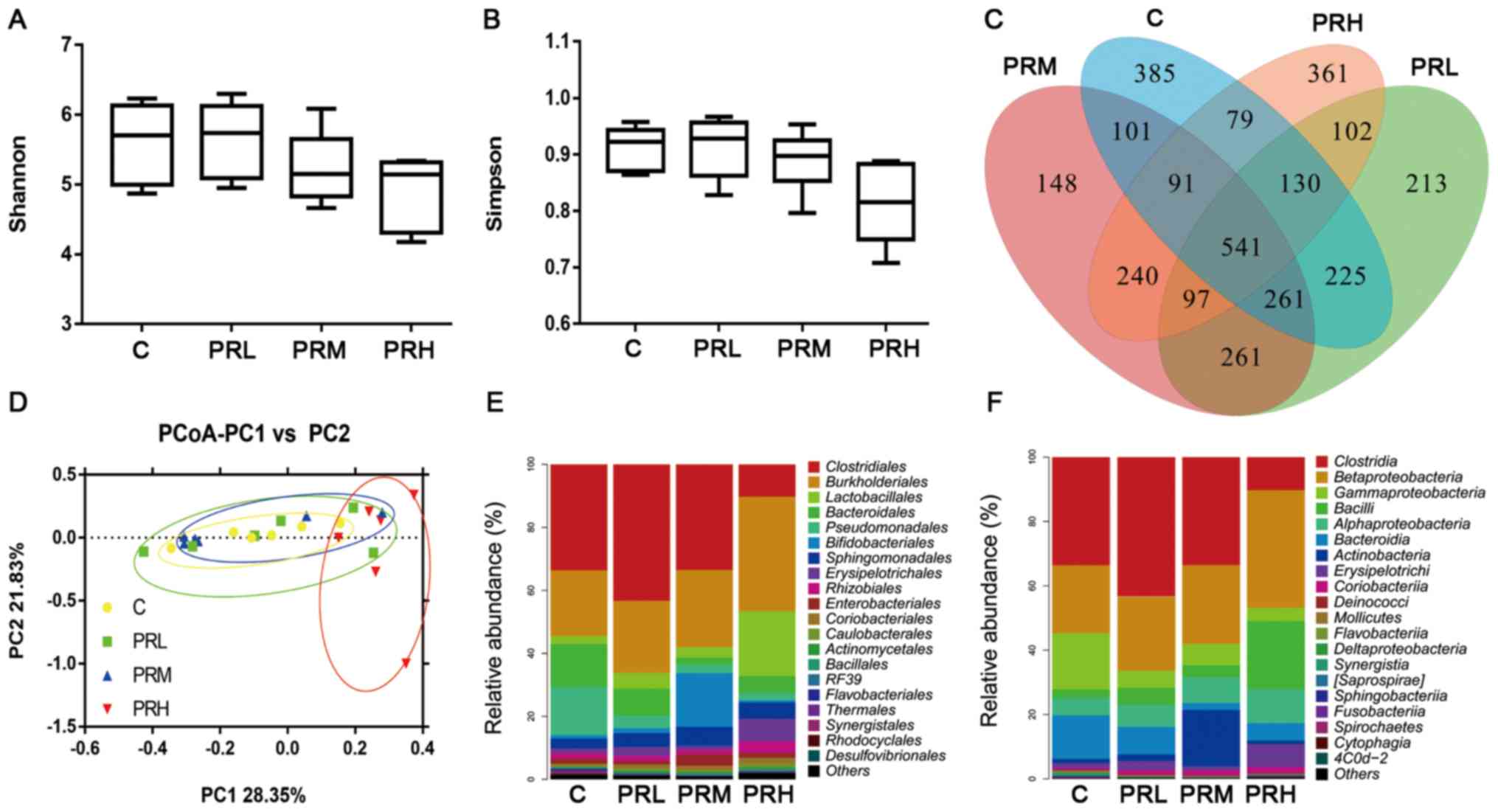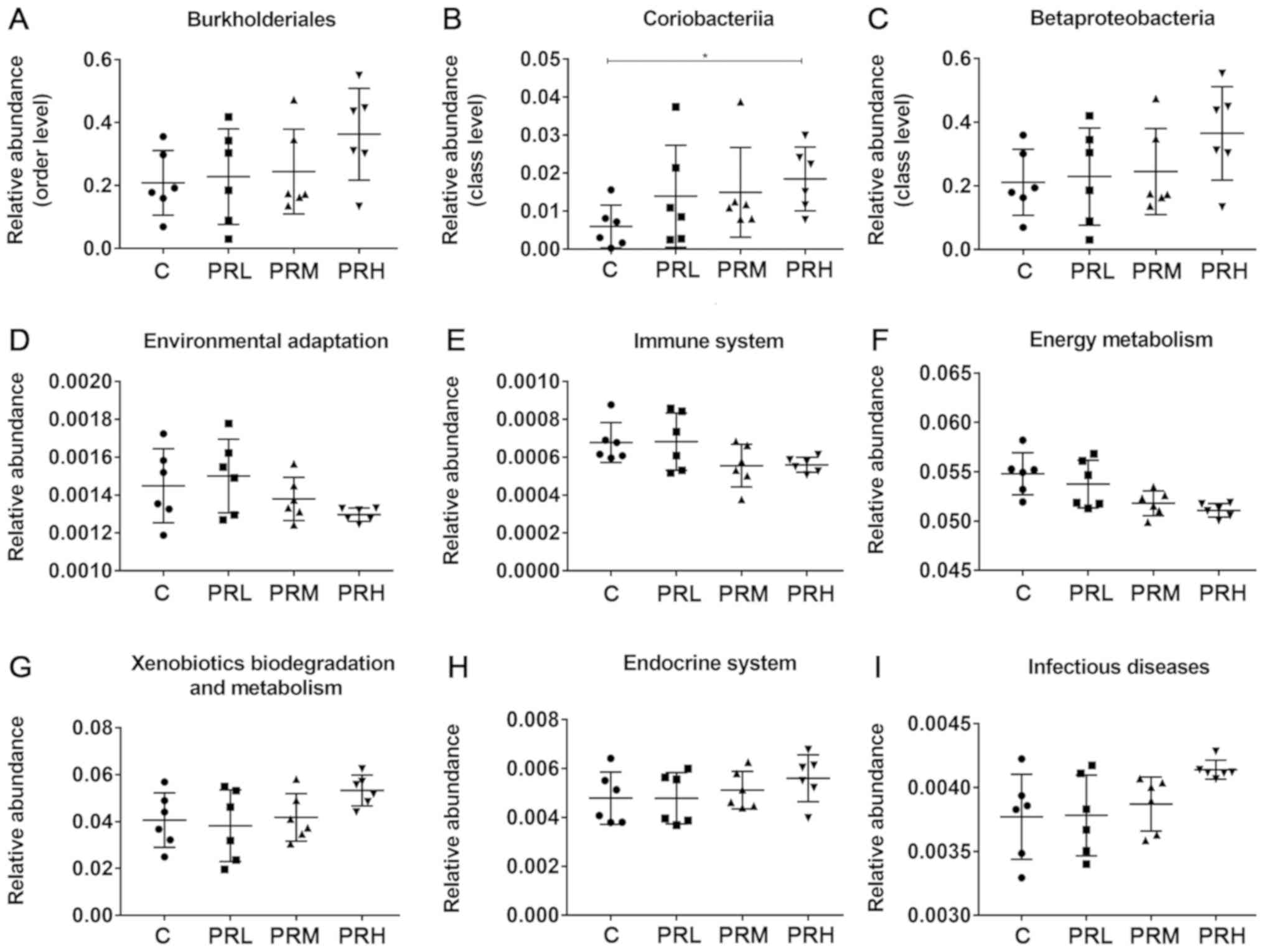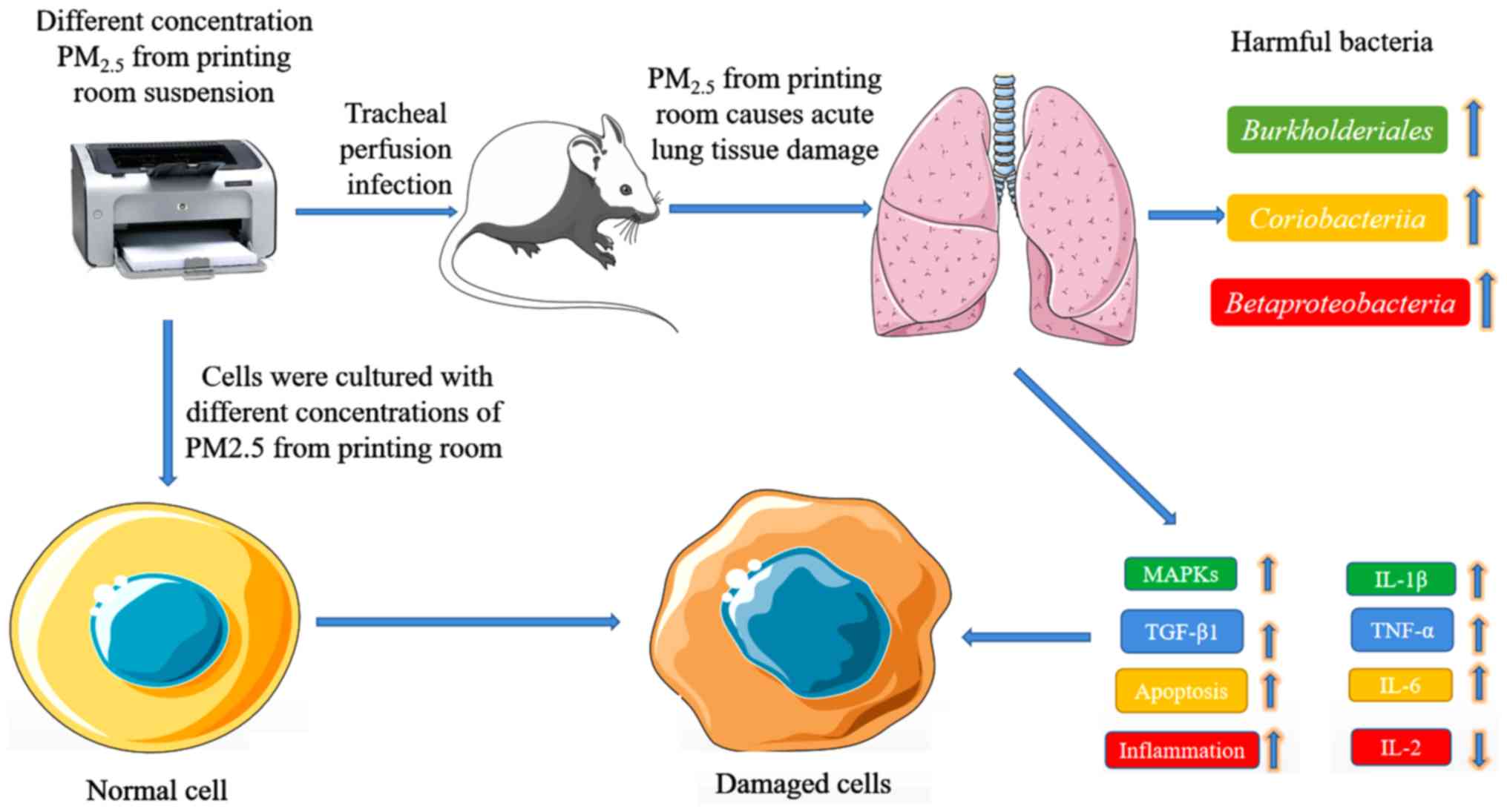|
1
|
Holzer M, Bihari P, Praetner M, Uhl B,
Reichel C, Fent J, Vippola M, Lakatos S and Krombach F:
Carbon-based nanomaterials accelerate arteriolar thrombus formation
in the murine microcirculation independently of their shape. J Appl
Toxicol. 34:3213–1176. 2014. View
Article : Google Scholar
|
|
2
|
Cohen AJ, Brauer M, Burnett R, Anderson
HR, Frostad J, Estep K, Balakrishnan K, Brunekreef B, Dandona L,
Dandona R, et al: Estimates and 25-year trends of the global burden
of disease attributable to ambient air pollution: An analysis of
data from the global burden of diseases study 2015. Lancet.
389:1907–1918. 2017. View Article : Google Scholar : PubMed/NCBI
|
|
3
|
Urlaub S, Grün G, Foldbjerg P and
Sedlbauer K: Ventilation and health - a review. Proc AVIC Conf.
2015.
|
|
4
|
Chen Y, Du W, Shen G, Zhuo S, Zhu X, Shen
H, Huang Y, Su S, Lin N, Pei L, et al: Household air pollution and
personal exposure to nitrated and oxygenated polycyclic aromatics
(PAHs) in rural households: Influence of household cooking
energies. Indoor Air. 27:169–178. 2017. View Article : Google Scholar : PubMed/NCBI
|
|
5
|
Du B, Gao J, Chen J, Stevanovic S,
Ristovski Z and Wang L and Wang L: Particle exposure level and
potential health risks of domestic Chinese cooking. Build Environ.
123:564–574. 2017. View Article : Google Scholar
|
|
6
|
Liu T, Liu Q, Li Z, Huo L, Chan M, Li X,
Zhou Z and Chan CK: Emission of volatile organic compounds and
production of secondary organic aerosol from stir-frying spices.
Sci Total Environ. 599-600:1614–1621. 2017. View Article : Google Scholar : PubMed/NCBI
|
|
7
|
Liu Y, Chen YY, Cao JY, Tao FB, Zhu XX,
Yao CJ, Chen DJ, Che Z, Zhao QH and Wen LP: Oxidative stress,
apoptosis, and cell cycle arrest are induced in primary fetal
alveolar type II epithelial cells exposed to fine particulate
matter from cooking oil fumes. Environ Sci Pollut Res Int.
22:9728–9741. 2015. View Article : Google Scholar : PubMed/NCBI
|
|
8
|
Khatri M, Bello D, Pal AK, Woskie S,
Gassert TH, Demokritou P and Gaines P: Toxicological effects of
PM0.25-2.0 particles collected from a photocopy center in three
human cell lines. Inhal Toxicol. 25:621–632. 2013. View Article : Google Scholar : PubMed/NCBI
|
|
9
|
Pirela SV, Bhattacharya K, Wang Y, Zhanga
Y, Wanga G, Christophic CA, Godleskia J, Thomasd T, Qiane Y,
Orandle MS, et al: A 21-day sub-acute, whole-body inhalation
exposure to printer-emitted engineered nanoparticles in rats:
Exploring pulmonary and systemic effects. NanoImpact.
15:1001762019. View Article : Google Scholar
|
|
10
|
Pirela S, Molina R, Watson C, Cohen JM,
Bello D, Demokritou P and Brain J: Effects of copy center particles
on the lungs: A toxicological characterization using a Balb/c mouse
model. Inhal Toxicol. 25:498–508. 2013. View Article : Google Scholar : PubMed/NCBI
|
|
11
|
Jensen M and Rold-Petersen J: Itching
erythema among post office workers caused by a photocopying
illachine with wet toner. Contact Dermatitis. 5:389–391. 1979.
View Article : Google Scholar : PubMed/NCBI
|
|
12
|
Galiardo M, Romero P, Sánchez-Quevedo MC
and López-Caballero JJ: Siderosilicosis due to photocopier toner
dust. Lancet. 344:412–413. 1994. View Article : Google Scholar : PubMed/NCBI
|
|
13
|
Grifka J: Use of drugs in renal
impairment. Internist (Berl). 49:1262008.(In German). View Article : Google Scholar : PubMed/NCBI
|
|
14
|
Theegarten D, Boukercha S, Philippou S and
Anhenn O: Submesothelial deposition of carbon nanoparticles after
toner exposition: Case report. Diagn Pathol. 5:772010. View Article : Google Scholar : PubMed/NCBI
|
|
15
|
Ya P, Xu H, Ma Y, Fang M, Yan X, Zhou J
and Li F: Liver injury induced in Balb/c mice by PM2.5 exposure and
its alleviation by compound essential oils. Biomed Pharmacother.
105:590–598. 2018. View Article : Google Scholar : PubMed/NCBI
|
|
16
|
Tavera Busso I, Vera A, Mateos AC,
Amarillo AC and Carreras H: Histological changes in lung tissues
related with sub-chronic exposure to ambient urban levels of PM2.5
in Córdoba, Argentina. Atmos Environ. 167:616–624. 2017. View Article : Google Scholar
|
|
17
|
Yang B, Guo J and Xiao C: Effect of PM2.5
environmental pollution on rat lung. Environ Sci Pollut Res Int.
25:36136–36146. 2018. View Article : Google Scholar : PubMed/NCBI
|
|
18
|
Li H, Zhao Q, Liu R, Yang L, Chen H and
Cui X: Protective effect and potential mechanism of simvastatin on
myocardial injury induced by diabetes with hypoglycemia. Exp Clin
Endocrinol Diabetes. 126:148–161. 2018. View Article : Google Scholar : PubMed/NCBI
|
|
19
|
Huang H, Zou C, Cao J and Tsang P:
Carbonaceous aerosol characteristics in outdoor and indoor
environments of Nanchang, China, during summer 2009. J Air Waste
Manag Assoc. 61:1262–1272. 2011. View Article : Google Scholar : PubMed/NCBI
|
|
20
|
Huang H, Zou C, Cao J, Tsang P, Zhu F, Yu
C and Xue S: Water-soluble Ions in PM2.5 on the Qianhu Campus of
Nanchang University, Nanchang City: Indoor-outdoor distribution and
source implications. Aerosol Air Qual Res. 12:435–443. 2012.
View Article : Google Scholar
|
|
21
|
Wang H, Song L, Ju W, Wang X, Dong L,
Zhang Y, Ya P, Yang C and Li F: The acute airway inflammation
induced by PM2.5 exposure and the treatment of essential oils in
Balb/c mice. Sci Rep. 7:442562017. View Article : Google Scholar : PubMed/NCBI
|
|
22
|
Zhang X, Zhong W, Meng Q, Lin Q, Fang C,
Huang X, Li C, Huang Y and Tan J: Ambient PM2.5 exposure
exacerbates severity of allergic asthma in previously sensitized
mice. J Asthma. 52:785–794. 2015.PubMed/NCBI
|
|
23
|
Tian P, Xu D, Huang Z, Meng F, Fu J, Wei H
and Chen T: Evaluation of truncated G protein delivered by live
attenuated Salmonella as a vaccine against respiratory syncytial
virus. Microb Pathog. 115:299–303. 2018. View Article : Google Scholar : PubMed/NCBI
|
|
24
|
Livak KJ and Schmittgen TD: Analysis of
relative gene expression data using real-time quantitative PCR and
the 2(-Delta Delta C(T)) method. Methods. 25:402–408. 2001.
View Article : Google Scholar : PubMed/NCBI
|
|
25
|
Hammery, Harper DA and Ryan PD: PAST:
Paleontological statistics software package for education and data
analysis. Palaeontol Electron. 4:1–9. 2001.
|
|
26
|
Tang T, Hurraß J, Gminski R and
Mersch-Sundermann V: Fine and ultrafine particles emitted from
laser printers as indoor air contaminants in German offices.
Environ Sci Pollut Res Int. 19:3840–3849. 2012. View Article : Google Scholar : PubMed/NCBI
|
|
27
|
Kohl H, Orth R, Riebartsch O, Galeitzke M
and Cap JP: Support of innovation networks in manufacturing
industries through identification of sustainable collaboration
potential and best-practice transfer. Procedia CIRP. 26:185–189.
2015. View Article : Google Scholar
|
|
28
|
Zhang ZQ, Zhang CZ, Shao B, Pang DH, Han
GZ and Lin L: Effects of abnormal expression of fusion and fission
genes on the morphology and function of lung macrophage
mitochondria in SiO2-induced silicosis fibrosis in rats in vivo.
Toxicol Lett. 312:181–187. 2019. View Article : Google Scholar : PubMed/NCBI
|
|
29
|
Smith RE, Strieter RM, Phan SH, Lukacs N
and Kunkel SL: TNF and IL-6 mediate MIP-1alpha expression in
bleomycin-induced lung injury. J Leukoc Biol. 64:528–536. 1998.
View Article : Google Scholar : PubMed/NCBI
|
|
30
|
Cavarra E, Carraro F, Fineschi S, Naldini
A, Bartalesi B, Pucci A and Lungarella G: Early response to
bleomycin is characterized by different cytokine and cytokine
receptor profiles in lungs. Am J Physiol Lung Cell Mol Physiol.
287:L1186–L1192. 2004. View Article : Google Scholar : PubMed/NCBI
|
|
31
|
Dai P, Shen D, Shen J, Tang Q, Xi M, Li Y
and Li C: The roles of Nrf2 and autophagy in modulating
inflammation mediated by TLR4-NFκB in A549 cell exposed to layer
house particulate matter 2.5 (PM2.5). Chemosphere. 235:1134–1145.
2019. View Article : Google Scholar : PubMed/NCBI
|
|
32
|
Hayden MS and Ghosh S: NF-κB in
immunobiology. Cell Res. 21:223–244. 2011. View Article : Google Scholar : PubMed/NCBI
|
|
33
|
Barker HE, Paget JT, Khan AA and
Harrington KJ: The tumour microenvironment after radiotherapy:
Mechanisms of resistance and recurrence. Nat Rev Cancer.
15:409–425. 2015. View Article : Google Scholar : PubMed/NCBI
|
|
34
|
Lazzara F, Fidilio A, Platania CBM,
Giurdanella G, Salomone S, Leggio GM, Tarallo V, Cicatiello V, De
Falco S, Eandi CM, et al: Aflibercept regulates retinal
inflammation elicited by high glucose via the PlGF/ERK pathway.
Biochem Pharmacol. 168:341–351. 2019. View Article : Google Scholar : PubMed/NCBI
|
|
35
|
Kuroki M, Noguchi Y, Shimono M, Tomono K,
Tashiro T, Obata Y, Nakayama E and Kohno S: Repression of
bleomycin-induced pneumopathy by TNF. J Immunol. 170:567–574. 2003.
View Article : Google Scholar : PubMed/NCBI
|
|
36
|
Ndaw VS, Abebayehu D, Spence AJ, Paez PA,
Kolawole EM, Taruselli MT, Caslin HL, Chumanevich AP, Paranjape A,
Baker B, et al: TGF-β1 suppresses IL-33-induced mast cell function.
J Immunol. 199:866–873. 2017. View Article : Google Scholar : PubMed/NCBI
|
|
37
|
Ashkenazi A, Fairbrother WJ, Leverson JD
and Souers AJ: From basic apoptosis discoveries to advanced
selective BCL-2 family inhibitors. Nat Rev Drug Discov. 16:273–284.
2017. View Article : Google Scholar : PubMed/NCBI
|
|
38
|
Hii LW, Lim SE, Leong CO, Chin SY, Tan NP,
Lai KS and Mai CW: The synergism of Clinacanthus nutans
Lindau extracts with gemcitabine: Downregulation of anti-apoptotic
markers in squamous pancreatic ductal adenocarcinoma. BMC
Complement Altern Med. 19:2572019. View Article : Google Scholar : PubMed/NCBI
|
|
39
|
Jiang C, Zhong R, Zhang J, Wang X, Ding G,
Xiao W and Ma S: Reduning injection ameliorates paraquat-induced
acute lung injury by regulating AMPK/MAPK/NF-κB signaling. J Cell
Biochem. 120:12713–12723. 2019. View Article : Google Scholar : PubMed/NCBI
|
|
40
|
Che Z, Liu Y, Chen Y, Cao J, Liang C, Wang
L and Ding R: The apoptotic pathways effect of fine particulate
from cooking oil fumes in primary fetal alveolar type II epithelial
cells. Mutat Res Genet Toxicol Environ Mutagen. 761:35–43. 2014.
View Article : Google Scholar : PubMed/NCBI
|
|
41
|
Wang Y, Chen J, Tang B, Zhang X and Hua
ZC: Systemic administration of attenuated salmonella typhimurium in
combination with interleukin-21 for cancer therapy. Mol Clin Oncol.
1:461–465. 2013. View Article : Google Scholar : PubMed/NCBI
|
|
42
|
Yu K, Rodriguez MD, Paul Z, Gordon E, Rice
K, Triplett EW, Keller-Wood M and Wood CE: Proof of principle:
Physiological transfer of small numbers of bacteria from mother to
fetus in late-gestation pregnant sheep. PLoS One. 14:e02172112019.
View Article : Google Scholar : PubMed/NCBI
|
|
43
|
Kaimala S, Al-Sbiei A, Cabral-Marques O,
Fernandez-Cabezudo MJ and Al-Ramadi BK: Attenuated bacteria as
immunotherapeutic tools for cancer treatment. Front Oncol.
8:1362018. View Article : Google Scholar : PubMed/NCBI
|
|
44
|
Zhao C, He J, Cheng H, Zhu Z and Xu H:
Enhanced therapeutic effect of an antiangiogenesis peptide on lung
cancer in vivo combined with salmonella VNP20009 carrying a Sox2
shRNA construct. J Exp Clin Cancer Res. 35:1072016. View Article : Google Scholar : PubMed/NCBI
|
|
45
|
Pacello F, D'Orazio M and Battistoni A: An
ERp57-mediated disulphide exchange promotes the interaction between
Burkholderia cenocepacia and epithelial respiratory cells. Sci Rep.
6:211402016. View Article : Google Scholar : PubMed/NCBI
|
|
46
|
Ning X, Ji X, Li G and Sang N: Ambient
PM2.5 causes lung injuries and coupled energy metabolic disorder.
Ecotoxicol Environ Saf. 170:620–626. 2019. View Article : Google Scholar : PubMed/NCBI
|
|
47
|
Pan K, Jiang S, Du X, Zeng X, Zhang J,
Song L, Zhou J, Kan H, Sun Q, Xie Y and Zhao J: AMPK activation
attenuates inflammatory response to reduce ambient PM2.5-induced
metabolic disorders in healthy and diabetic mice. Ecotoxicol
Environ Saf. 179:290–300. 2019. View Article : Google Scholar : PubMed/NCBI
|















